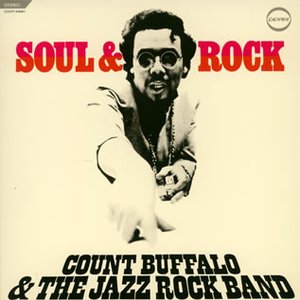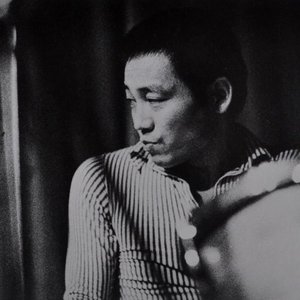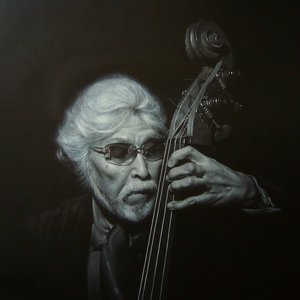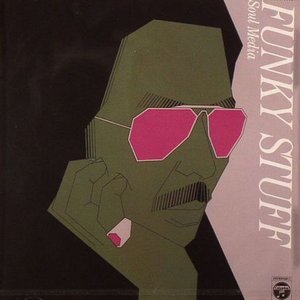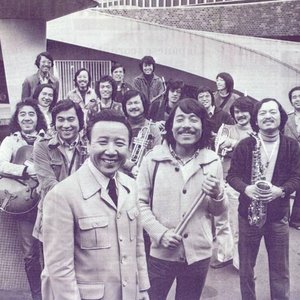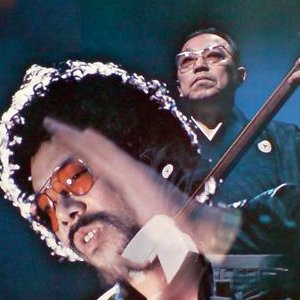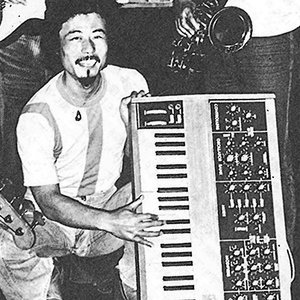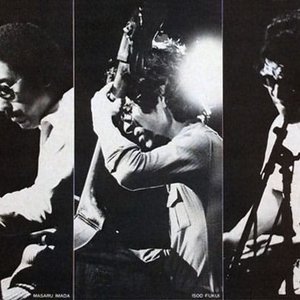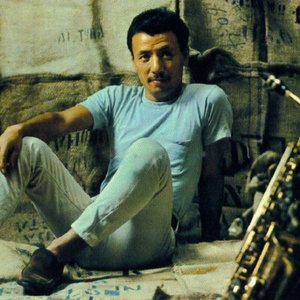Biography
From an auspicious beginning in 1958, Miyama-sensei and the New Herd grew from strength to strength in the 1960s, with concerts and summer residences all over Japan. They also broadened their repertoire to take in Latin Jazz and, of all things, the Twist! 1963 would see Miyama-sensei provide backing to the one and only Anita O’Day on her Japanese Tour (their first collaboration with a major western artist), swinging to Buddy Bregman orchestrations and featuring highly regarded Japanese players as Saijo Konosuke and Sawada Shingo guesting. Wish I was there!
Speaking of orchestrators, Miyama-sensei by now was working with the cream of the Japanese crop: in addition to Maeda Norio, there was work from SPACE BATTLESHIP YAMATO Composer Miyagawa Hiroshi, Yashiro Kazuo, the legendary Miho Keitaro (leader of the Japanese Jazz All-Stars) and, as an interesting side note, working with Movie Composer Uno Seiichiro on the groundbreaking stop-motion children’s TV show HYOKKORI HYOUTANJIMA (THE MADCAP ISLAND), produced by NHK (Japan’s BBC/RAI/PBS…), including the title song (c’mon Japan, sing it with me: Hyokkori Hyoutan-jima, Hyokkori Hyoutan-I—JI—-MA!).
Sumimasen…back to orchestrators. Like the later-era Count Basie, Miyama-sensei also called upon his players to provide orchestrations for the band, namely Altoman Takami Hiroshi (RIP) and the incredible Guitarist Yamaki Kozaburo who, having played a crucial role in the New Herd’s early development, was now fast becoming its most prolific orchestrator (in addition to composing originals for them), a title he still holds today! 1968 would bring about a longstanding collaboration with the awesome Satoh Masahiko, a man who outdoes the Swiss Army Knife for versatility, and this led to him contributing to the Herd’s 1969 album PERSPECTIVE, which was released by the Nippon Columbia organisation, and was the first of the New Herd’s MODERN BIG BAND series for them. Satoh-sensei composed, orchestrated and played Piano on the title track, while the team of Yamaki Kozaburo, Maeda Norio and Takami Hiroshi also contributed original compositions and orchestrations, and everyone’s collective efforts resulted in near-unanimous critical acclaim in Japan for PERSPECTIVE, including the SJ Japanese Jazz Record of the Year in 1970, and remains a Japanese Jazz classic to this day.
That takes us to the 1970s, and Miyama-sensei could feel justified in facing the decade with confidence, as more success was to come! By this time, Japanese Jazz was moving in the direction of Avant-Garde/Free Jazz and, rather than close himself off to it, Miyama-sensei embraced it, starting with Volume 2 of MODERN BIG BAND, entitled CANTO OF LIBRA, which was entirely composed and orchestrated by Satoh-sensei. 1971 would see them backing up the great Charles Mingus in concert in Tokyo, with his band and Satoh-sensei guesting at the Piano, all orchestrated by the equally great Jaki Byard. Further collaborations included one with Japanese Percussion superstar Yamashita Stomu (METEMPSYCHOSIS), entirely composed and orchestrated again by Satoh-sensei, and another MODERN BIG BAND record, CANTO OF ARIES, this time with the great Togashi Masahiko, who did all the composing and orchestration, besides being the soloist. Guess who the Pianist was!
METEMPSYCHOSIS, trivia fans, was produced by the legendary Fujii “Tee” Takeshi, who concurrently had formed his own company in 1970, the renowned Three Blind Mice label. In addition to Nippon Columbia, Miyama-sensei forged a collaboration with TBM in 1972, with the New Herd almost being the “house orchestra” for the label, and they worked together many times during the decade, which took in albums of originals by Yamaki-sensei (SUNDAY SONGS) and the terrific JAZZ ORCHESTRA ‘73/’75 discs by crossover composer Mizuno Shuko, which featured top J-Jazz players like Watanabe Kazumi and Suzuki Isao as soloists. Going back to 1972, Satoh-sensei recorded the classic YAMATAIFU with Miyama-sensei for the Toshiba-EMI organisation that year, an awesome record that Satoh-sensei considers to be one of his best to this day (and which, indirectly, is how I became aware of the band years later) – I fully agree with him!
The rest of the decade would bring opportunities to play abroad, including the Monterey Jazz Festival in 1974 and a grand tour of South America in 1978, backing up Satoh-sensei on his movie soundtracks, and yet more collaborations: by now Miyama-sensei had added the awesome Suzuki ‘Colgen’ Hiromasa (RIP) to his collection of orchestrators, and more was to come from Pianist/Composer Kako Takashi and Japanese Synthesizer pioneer Shoji Osamu, in addition to the aforementioned.
Now is a good time to say that Miyama-sensei has had a strong, if indirect, relationship with SJ through the years. 1978 would see the New Herd delve into the wonderful world of Fusion with BIG STUFF, a record composed, orchestrated and conducted by Ueda Chikara, who also played Keyboards and Synths. In addition to being a Composer and Performer of some repute, Ueda-sensei was a writer for SJ specialising in Fusion (to say nothing of many liner notes for such records) and who orchestrated the first Jazz record I ever owned! Also, when Miyama-sensei picked up the Nanri Fumio Award in 1985, he was one of the few recipients who worked with Nanri-sensei. Nice!
Miyama-sensei took things a bit easier from then on in the 1980s but, by this point in time, they were firmly established as the most creative, most adventurous repertory Jazz Orchestra in Japan and, for me, they remain so to this day, with their founder still in charge, though (understandably) as Miyama-sensei is 93, he calls upon his players for the odd assist with conducting. All the same, I’d like to take the opportunity to congratulate Miyama-sensei for 55+ years of excellence and adventure, for which he has more than my thanks, and I express my hope that – even at 93 – he won’t quit, as I think he’s still got a future! Arigato!
Artist descriptions on Last.fm are editable by everyone. Feel free to contribute!
All user-contributed text on this page is available under the Creative Commons Attribution-ShareAlike License; additional terms may apply.
